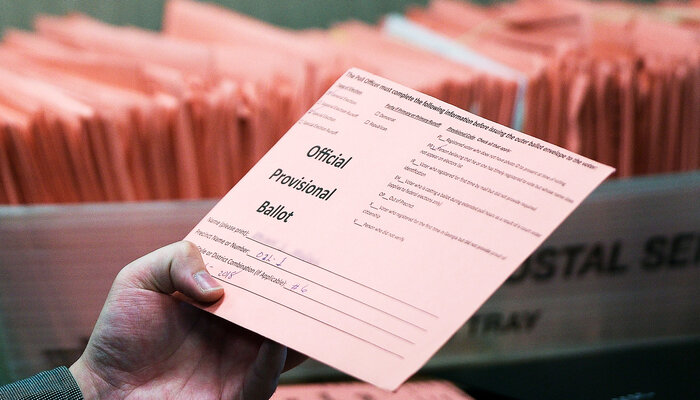What happens when a voter requests a mail ballot but then decides to vote in person because she changed her mind, or her ballot never arrived? This is happening all over the nation, and voters and election officials will need to take precautions to address it in the coming days.
We can better understand the scale of the matter by looking at Georgia. After just nine days of early voting, nearly 12 percent of roughly 1.15 million voters who voted in person had requested a mail ballot. Furthermore, 8 percent of all Georgia voters who requested absentee ballots had already voted in person.
In Georgia, this is not much of an issue for voters or election officials. These voters are given regular ballots if they show up at the polls. Any mail ballot they submit later will be rejected. But this is not the case in every state. In several, like California, Florida, and Pennsylvania, voters who requested a mail ballot may vote a regular ballot in person, but only if the voter brings her ballot with her to the polling place and poll workers are able to cancel or spoil the absentee ballot. Otherwise they are provided with a provisional ballot, which can be counted after it is confirmed the voter did not cast her mail ballot. By contrast, voters in Arizona, Texas, Ohio (on Election Day), and at least 10 other states are automatically provided with a provisional ballot when they show up to vote in person.
As a result, some jurisdictions have already reported substantial amounts of votes cast provisionally. As Connie Schmidt, election commissioner in Johnson County, Kansas, noted, within a few hours of processing on October 17, 5,658 advance in-person ballots were processed, 783 of which — 13 percent — were provisional “because [the elections office] had already sent a mail ballot to them.” This far exceeds the typical provisional voting rate of 1.8 percent in presidential elections.
This trend indicates that jurisdictions will need more provisional ballot materials than in previous years. Although Election Day is quickly approaching, there are still ways that election officials and voters can prepare for, and even mitigate, a potential surge in provisional ballot use.
The Brennan Center’s longstanding recommendation has been for election officials to have enough provisional envelopes and other necessary materials for 40 percent of registered voters in case of a cyberattack on the registration database, e-pollbook issues, or any other technical failure.
Even absent such a problem, a much larger amount than has been needed in prior elections will be required to accommodate voters who requested an absentee ballot. If possible, election officials, should consider obtaining additional provisional supplies now to prepare for a surge of in person voting on November 3. Fortunately, provisional envelopes and affidavits can generally be reused in future elections.
Unfortunately, ordering more provisional materials may not be an option for some election officials this close to Election Day, as was the case for election officials in Arapahoe County, Colorado, in 2010. They noticed an increased demand for provisional ballots and were concerned that they would exhaust their provisional envelope supply on or even before Election Day. Officials considered purchasing additional materials, but their vendor was unable to fulfill the orders on such short notice.
However, by ordering blank envelopes in bulk from an office supply vendor and working with a handful of employees who could operate presses and Xerox machines, the county’s elections office successfully printed additional provisional envelopes. Each envelope was printed with serial numbers, a requirement for facilitating a post-election audit. Additionally, the affidavit on the front of the official provisional envelope was printed onto sheets that adhered to the new envelopes. The officials’ adaptability and ingenuity allowed them to accommodate voters who may have otherwise lost the opportunity to vote.
If their states allow, we encourage election officials to explore this and other creative options to prepare for an influx of provisional voters on and before Election Day. They can also continue to educate voters on the electoral process, from the polling booth to certification, and the security measures put in place protect the vote.
However, election officials are not the only ones who can make a difference. Voters themselves play an instrumental role in reducing the strain on election offices and can take steps to avoid provisional voting.
Many states allow voters to drop off their voted absentee ballots in a secure drop box, at their local election office, or even at a polling location. Furthermore, voters who have requested absentee ballots but choose to vote in person should bring their ballot and ballot materials with them to the polls, especially if their state allows them to cast their absentee ballot at the polls or turn over that ballot and vote a regular one.
Election officials have overcome unprecedented obstacles over the past six months, implementing countless resiliency measures to strengthen our election system. Voters are more engaged in our democratic process than they have been in years and can continue to participate while being proactive, patient, and learning about the process. If everyone does their part, we can ensure that that each person can safely and securely cast their ballot.







